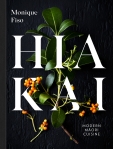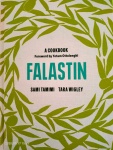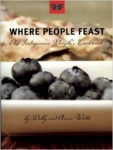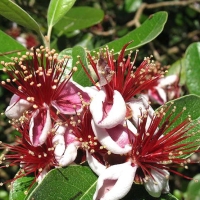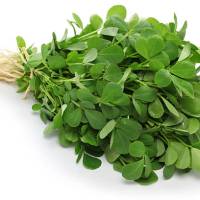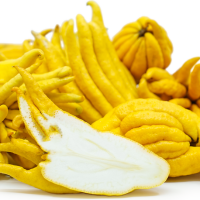
All I need to hear are the words ‘healthy vegan meat replacement’ to turn me off of a product forever. So, although I have known about jackfruit for ages I have almost actively avoided putting it in my cooking space or thinking space. But really, I can’t justify such a recalcitrant attitude and claim to be curious at the same time. So, when faced with Jackfriut BaoBuns the other day I thought ‘what the hell, meat replacement here I come’.
The jackfruit (Artocarpus heterophyllus) originated and has been used forever in Southeast Asia. Archaeological findings show it was cultivated in India 3000 to 6000 years ago. It is the national fruit of two countries (Bangladesh and Sri Lanka) and the state fruit of Kerala and Tamil Nadu. Not surprisingly it spread to other parts of southeast Asia, the East Indies, the Phillipines, Thailand, Indonesia and Malaysia. The Food Revolution Network tells us that it ‘also grows in Africa and is relatively popular in Brazil and Suriname as well. Jackfruit trees typically grow in tropical and near-tropical conditions, but they can also be produced in Florida, Hawaii, and Australia’.
It is a relative of the mulberry, fig and breadfruit and it bears the largest fruit of all trees with individual fruits reaching 90cm long, 50cm in diameter and weighing up to 55kgs, although the average weight of a fruit is 5-12kg. Each tree, depending on maturity, can produce up to 200-500 fruits a year and the fruit can take 3-8months from flowering to reach maturity.

Source: Today 
Although it has been a staple of many diets for many centuries, it is now in disfavour on the Indian sub-continent, with many trees and fruits being neglected. It is, however, as a present day meat substitute that it is finding favour amongst those who wish to move away from animal products but still have the same mouth feel available to them. It is also being promoted as a solution to world hunger firstly, because it can be an alternative for meat, and secondly, because it produces on such vast quantities. It would be wise however to note the nutritional content before relying on it as a panacea for world hunger.
Nutritionally, the seeds contribute significant protein and, tasting similar to chestnuts and macadamia, are often boiled or roasted and eaten as snacks. But it is the flesh that is commonly used in dishes and the flesh provides fibre, antioxidants, vitamins and minerals but is low, in comparision with other vegetable and meat substitutes, in protein (jackfruit has around 1g of protein per 100g, whereas Quorn has approx. 13-15g and chicken 25g). The flesh is also very low in calories. Two cups of jackfruit contain 310 calories and has the following vitamins and minerals: Fiber: 6 grams, Protein: 5.6 grams, Vitamin A: 20% of Recommended Daily Intake (RDI), Vitamin C: 36% of RDI, Riboflavin: 22% of RDI, Magnesium: 30% of RDI, Potassium: 28% of RDI, Copper: 30% of RDI, Manganese: 32% of RDI. Low in natural sugars, it is being investigated for its benefits in aiding the control of type 2 diabetes.
It is the fleshy petals of the young, unripe green fruit that are used as a substitute to TVP, Quorn, Soya, Tofu or meat. This flesh is not sweet, it has, like tofu, a neutral taste (likened by some to a tinned artichoke), and a texture similar to pork or chicken. It takes on whatever flavour you pair it with and so is popular as a filler substitute in tacos, burritos, curries and stir-fries (see Today, What is jackfruit? Benefits, how to cook and eat jackfruit recipes). This young jackfruit is generally found in tins – unless you live in any of the above named countries, in which case you can just find a tree – or in bags in the freezer section of your supermarket. It is often packed in water with salt so needs a good rinsing before use.
The mature jackfruit on the other hand is sweet, with tropical flavours and is said to taste of pineapple or mango and is typically eaten raw or as part of a dessert. After chilling it in the fridge, you can then cut out the seeds with a sharp paring knife (this takes some effort). It can be eaten raw, just like that.
The Minimalist Baker offers a recipe for BBQ Jackfruit, and I replicate it for you as the weekly recipe. Enjoy the BBQ as it is, or, as suggested add some salad, put all into a bun, add some cashews and there you have the perfect sandwich! Enjoy!

Weekly Recipe





